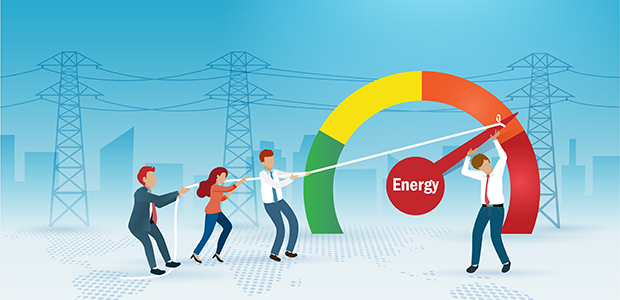The UK, like many other countries, has been grappling with rising energy costs in recent years, a trend that has had a significant impact on various sectors, especially data centres. As the demand for digital services continues to grow, data centres, which are responsible for housing the physical infrastructure that supports cloud computing, web hosting, and large-scale data processing, face increasing pressure to manage energy costs while maintaining operations.
How Rising Energy Costs Affect UK Data Centres
Data centres require large amounts of energy to power and cool the servers that process and store data. The rising cost of energy has made running these facilities more expensive, affecting their overall profitability and operational efficiency. Here are a few key impacts of rising energy costs on UK data centres:
- Increased Operational Costs
Data centres rely heavily on energy for both powering servers and cooling the equipment to prevent overheating. With energy prices increasing, operating costs have escalated, and many data centres are faced with rising electricity bills. This leads to tighter profit margins and may force data centres to either raise prices for customers or find ways to absorb these costs. - Pressure on Sustainability Goals
Many data centres are increasingly being pressured to meet sustainability goals, including reducing their carbon footprint and improving energy efficiency. Rising energy costs, particularly from fossil fuel sources, make this more challenging. Although renewable energy options like wind and solar are available, they often require significant upfront investment and infrastructure changes. As energy prices rise, data centres may find it harder to justify the costs of transitioning to greener alternatives. - Efficiency and Technological Investment
To cope with rising energy prices, data centres are investing more in energy-efficient technologies and innovative solutions. These include:- Advanced Cooling Systems: Traditional cooling methods are energy-intensive, and data centres are turning to more efficient systems, like liquid cooling and AI-driven temperature management, to reduce energy consumption.
- AI and Automation: Data centres are incorporating AI systems to better manage energy use, optimize server performance, and forecast energy demands. Automation helps data centres adjust to fluctuating energy needs in real time, further reducing costs.
- Modular Data Centres: These are smaller, flexible data centres that allow companies to scale up or down more efficiently, optimizing energy use and minimizing wasted power.
- Energy Procurement Strategies
In response to rising energy prices, data centres are increasingly looking for ways to lock in energy rates through long-term contracts or explore alternative energy sources like on-site renewable generation. Purchasing energy in bulk, negotiating better contracts, or using energy management software to monitor consumption can help mitigate rising costs. - Impact on Cloud and Hosting Providers
Many businesses rely on cloud computing and hosting services, and the energy costs incurred by data centres are passed on to these customers. As data centres struggle with high energy prices, cloud service providers may raise their prices, making it more expensive for businesses to maintain their online operations. This has a ripple effect throughout the tech industry, influencing prices for software-as-a-service (SaaS) solutions, online storage, and computing resources.
Strategies for Mitigating Rising Energy Costs
To reduce the impact of rising energy costs, UK data centres are implementing several strategies:
- Adopting Renewable Energy
Investing in renewable energy sources such as solar, wind, or hydropower is one way data centres can reduce their dependence on the grid and lower energy costs in the long term. Some data centres are also entering into power purchase agreements (PPAs) with renewable energy providers to lock in fixed prices for electricity. - Improved Energy Efficiency
Data centres are focusing on improving their energy efficiency through better building designs, advanced cooling systems, and energy-efficient servers. Reducing overall energy consumption not only helps cut costs but also aligns with the sustainability goals of both data centre operators and their customers. - Geographical Relocation
Some data centres are relocating to areas with lower energy costs or better access to renewable energy. For example, areas with cooler climates may reduce the need for energy-intensive cooling systems, or regions with abundant renewable energy resources may be more cost-effective in the long run. - Data Centre Consolidation
Instead of maintaining several smaller data centres, many companies are consolidating their operations into fewer, larger facilities that can benefit from economies of scale and greater energy efficiency. This consolidation helps reduce the energy per unit of computing power and reduces operational costs. - Government Support and Regulations
The UK government has introduced various initiatives and regulatory frameworks aimed at improving energy efficiency and reducing carbon emissions. Data centres that comply with these regulations can benefit from incentives, tax breaks, or funding for energy-efficient upgrades. Additionally, regulatory bodies are pushing data centres to adopt best practices in energy management and sustainability.
The Future of Data Centres and Energy Costs
As energy costs continue to rise, UK data centres will need to adapt quickly to the changing energy landscape. The ongoing transition towards renewable energy, improvements in energy efficiency technologies, and strategic investments in smarter infrastructure will be key to ensuring that data centres can continue to operate efficiently and remain competitive. With growing demand for cloud computing and data services, finding ways to keep energy costs under control will remain a top priority for the industry.
In conclusion, the rise in energy costs is a significant challenge for UK data centres, but through technological innovation, energy efficiency improvements, and strategic energy sourcing, these businesses can mitigate the impact and continue to thrive in an increasingly energy-conscious world.

